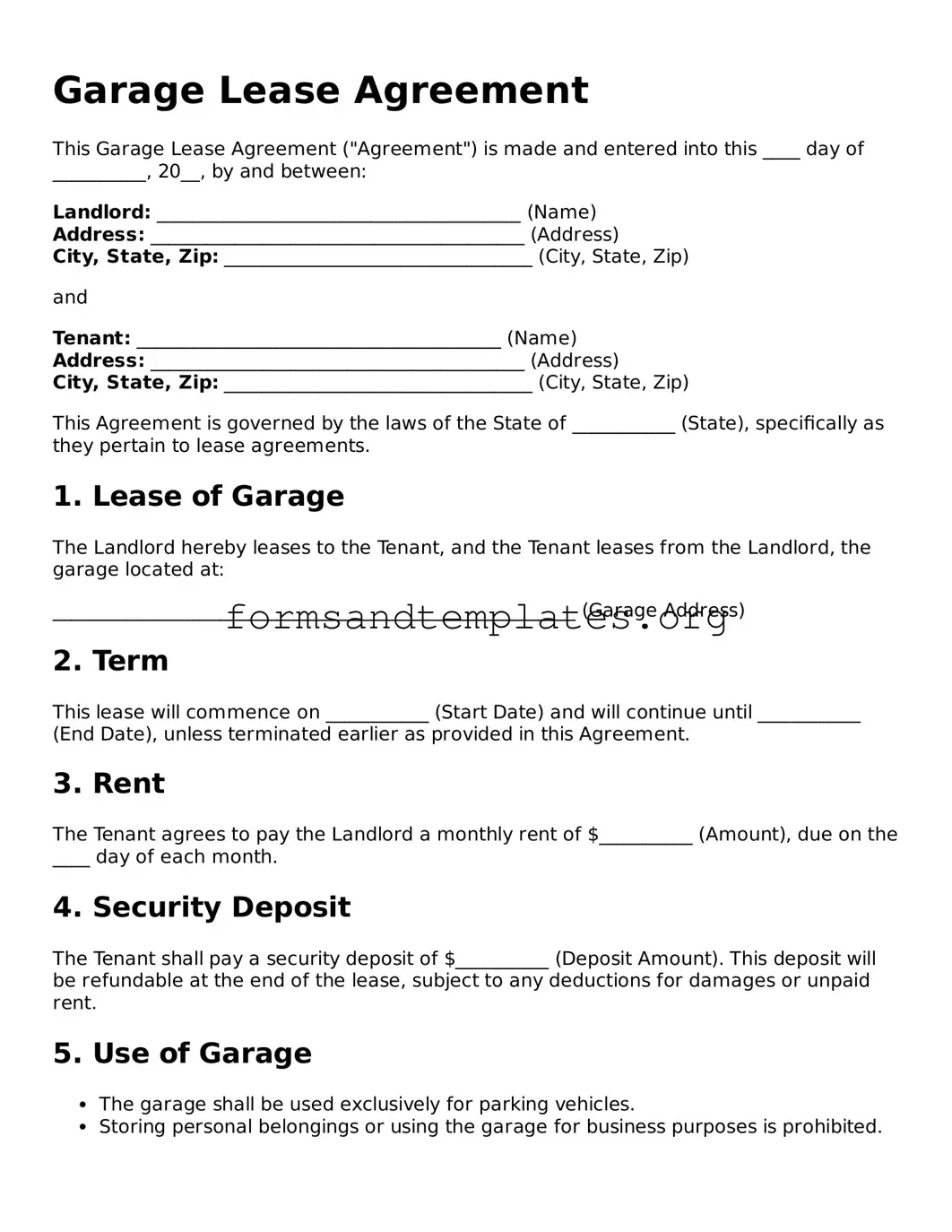Garage Lease Agreement
This Garage Lease Agreement ("Agreement") is made and entered into this ____ day of __________, 20__, by and between:
Landlord: _______________________________________ (Name)
Address: ________________________________________ (Address)
City, State, Zip: _________________________________ (City, State, Zip)
and
Tenant: _______________________________________ (Name)
Address: ________________________________________ (Address)
City, State, Zip: _________________________________ (City, State, Zip)
This Agreement is governed by the laws of the State of ___________ (State), specifically as they pertain to lease agreements.
1. Lease of Garage
The Landlord hereby leases to the Tenant, and the Tenant leases from the Landlord, the garage located at:
________________________________________________________ (Garage Address)
2. Term
This lease will commence on ___________ (Start Date) and will continue until ___________ (End Date), unless terminated earlier as provided in this Agreement.
3. Rent
The Tenant agrees to pay the Landlord a monthly rent of $__________ (Amount), due on the ____ day of each month.
4. Security Deposit
The Tenant shall pay a security deposit of $__________ (Deposit Amount). This deposit will be refundable at the end of the lease, subject to any deductions for damages or unpaid rent.
5. Use of Garage
- The garage shall be used exclusively for parking vehicles.
- Storing personal belongings or using the garage for business purposes is prohibited.
6. Maintenance
The Tenant shall keep the garage clean and in good condition. The Landlord is responsible for major repairs unless damage results from the Tenant's misuse.
7. Termination
Either party may terminate this Agreement by providing ____ days written notice to the other party.
8. Governing Law
This Agreement shall be governed by and construed in accordance with the laws of the State of ___________ (State).
9. Additional Terms
________________________________________________________ (Any additional terms or provisions)
IN WITNESS WHEREOF, the parties have executed this Garage Lease Agreement on the date first above written.
Landlord's Signature: ________________________________
Date: _____________________________________________
Tenant's Signature: _________________________________
Date: _____________________________________________
